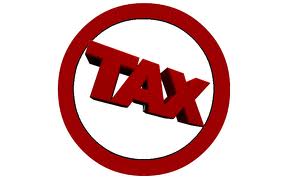
D.K. Tursynbayeva,
Ph.D. in Economics,
Institute of Economics CS of the MES RK
“It is necessary to install the favorable tax regime for the items of taxation, involved in the area of production and novel technologies. Now this work has started. I seta task to improve it: carry out the revision of all the effective tax concessions and make it effective to the maximum”.

At the present time the new paradigm of an economic growth on the basis of new knowledge and innovations use is compiled. In the industrially advanced countries the transition from the capital export to technologies transfer, the replacement of intensive economy type to innovative are observed. For the development of innovative activity the state should create the favorable innovative environment, forming the civilized market relations in the area of the intellectual property items turnover, which promotes the financial resources concentration on the priority-oriented directions of scientific and technical development, creation of specified procedural and institutional conditions for the innovative entrepreneurship.
It is generally admitted that the tax policy is an important instrument of economic incentive of entrepreneurial activity. Over the last years by the foreign and domestic specialists it is treated as one of the most effective instruments in the system of indirect incentives for enhanced efficiency of innovative ventures. However if abroad the various versions of conceptions of incentive nature of tax policy have inalterably received and still are receiving the legislative recognition, then in the native legislative practice the indirect incentives obtain the reflection only over the last years.
In a majority of countries the system of incentives, activating the entrepreneurial activity in the small and medium business, exists. Herein namely the system but not the individual short-term measures provide the stable economy growth on account of efficient operation of small and medium-sized enterprises. The experience of those countries wherein the small and medium-sized enterprises percolate give the evidence hereof. Almost the half of European small and medium-sized enterprises is innovative, since they execute the research scientific work (RSW) independently or in a partnership with the large enterprises, offer the new products and technologies on the market or perform the commercialization of existing products and technologies. According to the results of independent researches, SME in the Western Europe are even more effective in the process of research activities conduction and creation of innovative products, than the large enterprises.
Many countries apply the different variants of policy of easing the tax burden, the patent examples of such advantageous changes in taxation are the simplification of associated accounting statement procedures, decrease of rates on some taxes. These measures are also applied in our country, though for the small business entity.
The tax incentive system is one of key conditions of innovative activity activating. It should be geared to the creation of favorable economic climate to the enterprises on basis of tax burden alleviation for the purposes of rise of the capital renewals frequency, increase of costs for research and development, commissioning of productive innovations. The innovation enterprises activity regulation by way of tax instruments use is appealed for coherence of the state’s interests and opportunities with the coordinated handling of public finds and private investors’ resources in the innovation sector.
For the purpose of innovative activity incitement such type of tax concessions as the assignment of research and investment tax credit, deferral of taxes in a part of expenses from the profit to innovative activity is applied, what is reasonably to apply in the process of manufacture technological modernization with a view to its competitive ability rise. The tax credit is a direct subtraction out of the amount of accrued income tax, but not out of profit, which is subject to taxation. The tax amount returns after the designated period out of profits from the innovative manufacture development. The investment tax credit to capital asset are offered in the form of investment discounts and called as the “tax investment credit”. Thus, Great Britain as far back as the middle of 40s has introduced the “top-priority discounts”, which were provided to the enterprises in the first year of machinery, equipment and plant facilities operation, its volumes have been repeatedly increasing in 80s and have achieved 50% of new machinery and equipment cost. In Canada the amount of investment discount fluctuates from 10% to 15% depending on the enterprise spatial location.
The investment tax concession renders the assistance on acquisition and operation of newest equipment, transition to the technical innovations of outputs production, execution of work, rendering of services. However, this exemption is not fully able to thrust forward the enterprises for the creation and funding of the own scientific programs, which outcomes are not paid off in a short-term period. This function the specific privilege – “the tax credit for R&D increment” (research tax credit) fulfills, it means the right to subtract from the amount of income tax the specified share, which size depends on the amount of increase of present intramural expenditures to R&D against the similar expenditures, which have taken place in prior period. The maximum amount of the sum, which is permitted to deduct, is settled in absolute terms or as a percentage of total amount of tax liabilities from the income tax of a legal entity. Such type of privilege is valid practically in all industrially advanced countries.
The activation of innovative activities of business entities may bring the significant positive result in the establishment and development of a state innovation-driven economy.
